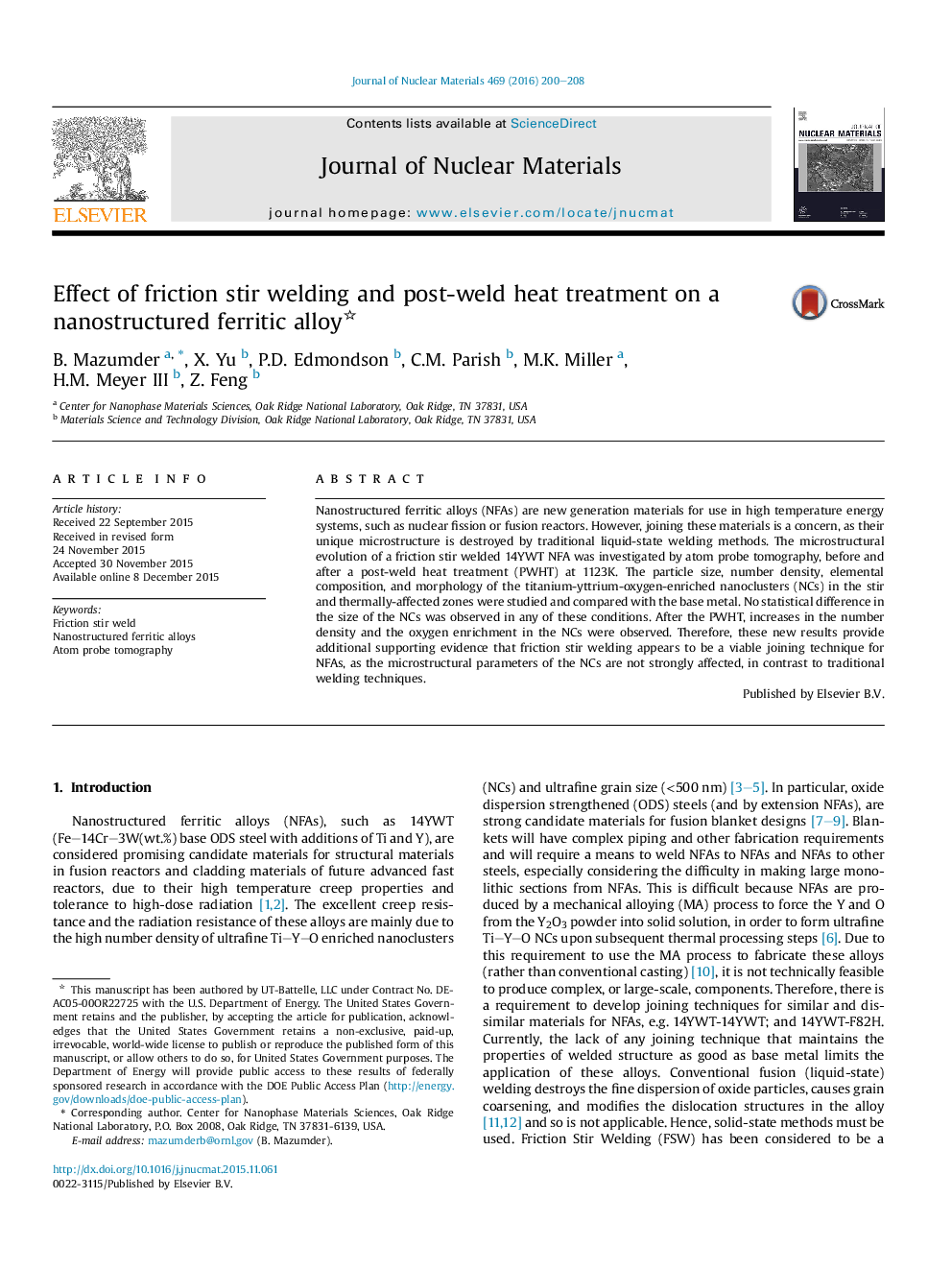| Article ID | Journal | Published Year | Pages | File Type |
|---|---|---|---|---|
| 1564794 | Journal of Nuclear Materials | 2016 | 9 Pages |
Nanostructured ferritic alloys (NFAs) are new generation materials for use in high temperature energy systems, such as nuclear fission or fusion reactors. However, joining these materials is a concern, as their unique microstructure is destroyed by traditional liquid-state welding methods. The microstructural evolution of a friction stir welded 14YWT NFA was investigated by atom probe tomography, before and after a post-weld heat treatment (PWHT) at 1123K. The particle size, number density, elemental composition, and morphology of the titanium-yttrium-oxygen-enriched nanoclusters (NCs) in the stir and thermally-affected zones were studied and compared with the base metal. No statistical difference in the size of the NCs was observed in any of these conditions. After the PWHT, increases in the number density and the oxygen enrichment in the NCs were observed. Therefore, these new results provide additional supporting evidence that friction stir welding appears to be a viable joining technique for NFAs, as the microstructural parameters of the NCs are not strongly affected, in contrast to traditional welding techniques.
